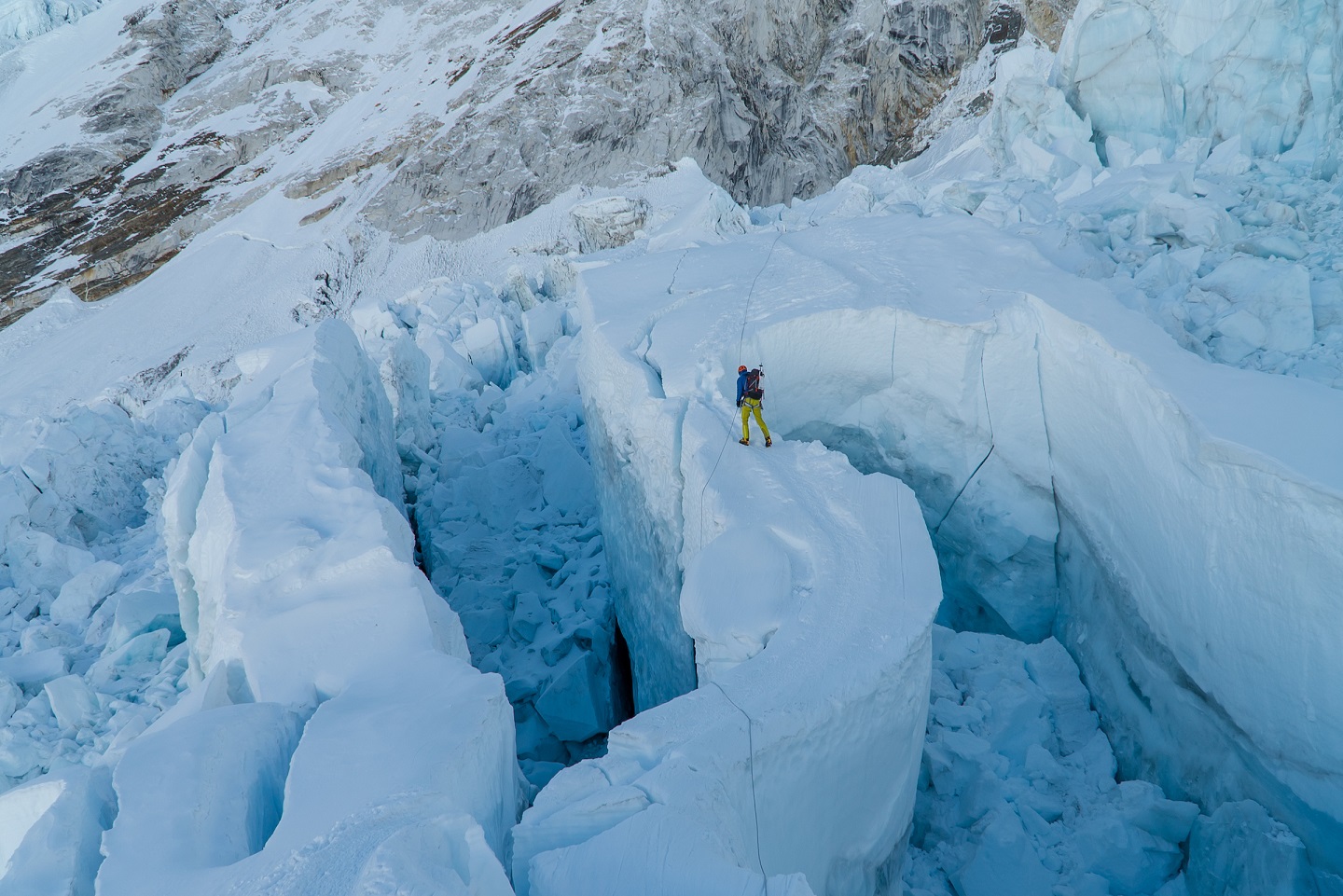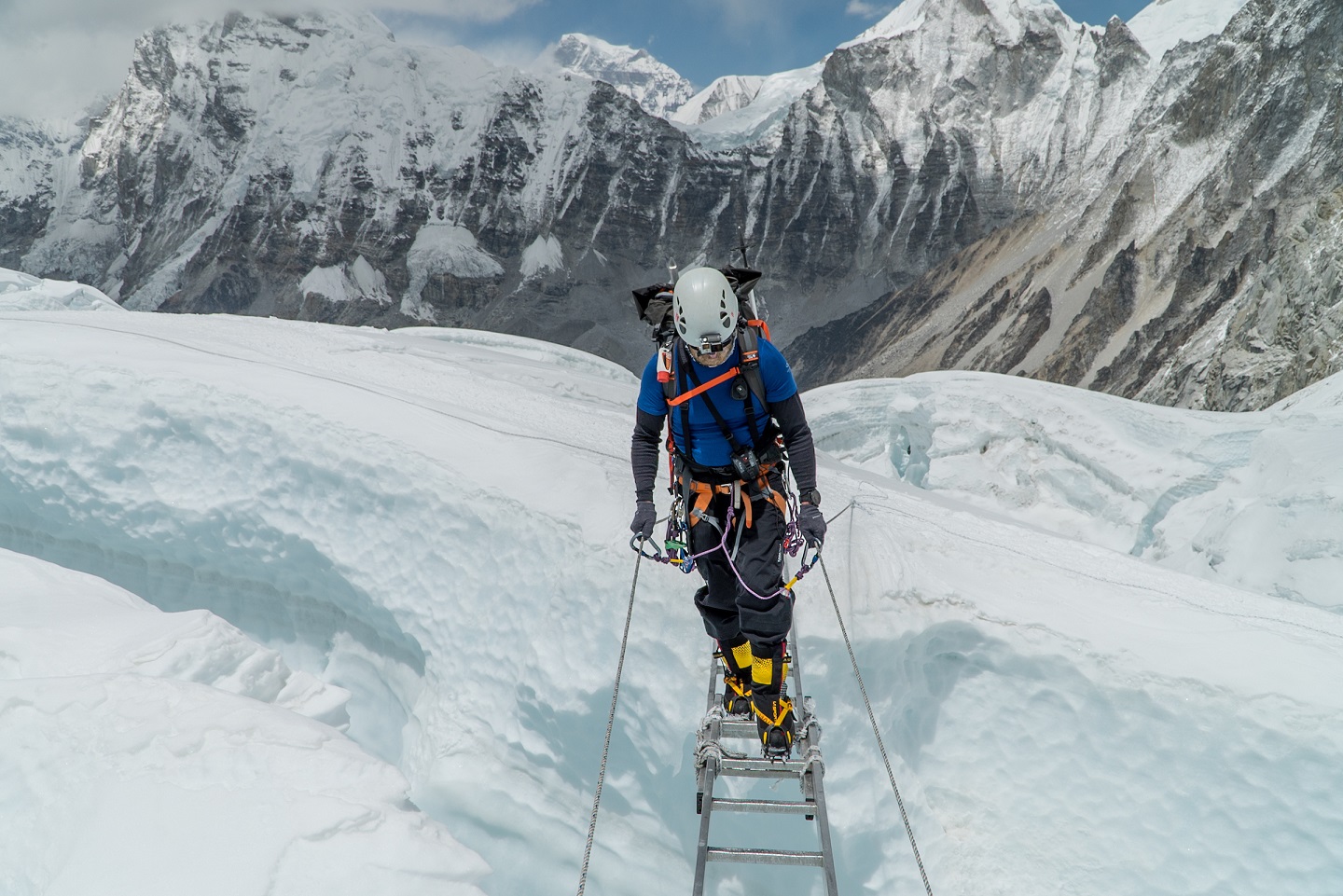Learn the logistics and preparation needed to climb Mount Everest. It's much more than physical training. It's also a practice in patience and demands funding.
By Owen Clarke
Owen Clarke is a freelance outdoor and travel journalist specializing in mountaineering.
Climbing the world’s tallest mountain is no easy feat. You can’t hop off the couch after months of Call of Duty, cheese puffs, and soda, and expect to get very far. Preparation for climbing Everest takes time and no small amount of physical and mental conditioning.
But summiting Everest isn’t just about physical training. For the uninitiated, planning a successful expedition to Everest is a logistical nightmare. You have to source food and water, oxygen, tents, high-altitude apparel, and climbing gear. You have to enact waste disposal in an ecologically friendly manner. You have to negotiate with porters, cooks, and other support staff. You have to monitor weather conditions, navigate complex permit processes, and finagle with all manner of international travel restrictions. Simply put, it’s a bear.

Logistical Preparation for Everest
Luckily, when you hire a guide, the logistics are in the hands of an experienced veteran, who knows the ins and outs of the mountain. Our lead guides, Willie and Damian, have summited Everest 20 times, collectively, and have been guiding the mountain since 1999. Willie has the third most Everest summits of any non-Sherpa in the world (13).
One of the many benefits of hiring an experienced guide for Everest is that you don’t need to worry about logistical preparation. You can focus completely on the physical training, and be sure that your body is in top shape to stand at 29,000 feet. This dramatically improves your chances of a successful summit.
Learn more about our Everest Base Camp Trek HERE
Training for Climbing Mount Everest
With all the media out there about Everest, and Himalayan climbing in general, you might start to think, “Hey, this doesn’t look so bad!”
If people are out there doing it without oxygen, solo, and/or in winter, if people are out there linking it with other peaks, surely you’ll be in shape just to summit, right? Well, before you start taking this train of thought, you have to remember, these men and women are full-time climbers and guides. Mountain climbing is all they’re doing, day in and day out.
The majority of Everest climbers (yourself likely included) hold down full-time jobs, not to mention families and other obligations. You won’t be able to spend hours upon hours every day for a year to get in professional shape. With that in mind, you simply want to push yourself as much as possible in the time you have. If you think you’re in shape to climb Everest, you’ve probably still got a long way to go.
In addition to having some experience on lower elevation mountains, training for Everest should take place over eight to 12 months, at least, and focus on endurance (both physical and mental) above all else.
On the summit of Everest, a human breathes only ⅓ of the oxygen they do at sea level. Even with supplemental oxygen, you’ll be experiencing these effects to some extent. Your heart, lungs, and muscles will be dealing with a serious oxygen deficit, and your red blood cells will need to work overtime to carry oxygen throughout your body.
In addition to a decline in performance, without enough oxygen, major threats like cerebral edema (brain swelling) or pulmonary edema (fluid in your lungs) begin to occur. Because of this, you want to have as much aerobic and endurance training as possible before you head to the Himalaya to begin your climb.
Build a Foundation
Before you begin training in earnest, building a solid fitness foundation is crucial. This will give you a good launchpad for training, and reduce your risk of injury.
A proper foundation should include being at ideal body weight or BMI (body mass index) for your height, age, and gender. In addition, you should be able to perform a modicum of basic physical fitness exercises.
Some examples include: holding a plank for two minutes, performing 25-rep sets of pushups and situps, running five miles at a 10-minute pace, completing two to three pull-ups, and doing three sets of 20 lunges. You should also be eating a balanced diet. If you aren’t at this basic level of physical fitness, spend a few months reaching this point before you begin training.
Train Aerobics and Strength
This is the main phase of training for Everest. Above all else, focus on endurance over high-intensity training. This means long, slow days carrying heavy loads. If you live in regions (Colorado, California, etc.) with higher altitude peaks in the vicinity, take advantage of that. If not, just focus on hiking as many miles with as much vertical gain as possible. Couple these long hikes with long runs here and there (building up to 8-10 miles) to increase your endurance and aerobic strength.
In addition to aerobic fitness, strength plays a role. You have to be able to carry heavy loads for long hours if you want to summit. You won’t need to be walking around with massive biceps and pecs like the Rock, though.
Your strength should be built primarily in your abdomen and lower back, as well as your legs. Lunges, sit-ups, planks, and squats are all great exercises to build your legs and core.

Don’t Bulk
Everyone loses a bit of weight on Everest, but that doesn’t mean you should gain weight beforehand to compensate. Go in with your ideal weight, and do whatever you can to maintain it throughout your expedition. Packing extra pounds onto the mountain will only increase the strain your body is under, making it harder for your heart and lungs to function properly.
Take Rest Days
Don’t forget to take rest days. You aren’t doing yourself any favors pounding your body away every day. Muscles take 24 hours to rebuild and repair after a hard workout. Change it up, and keep your workout routine enjoyable. Add in bits of basketball, soccer, cycling, surfing… whatever you enjoy, in addition to all the hiking and running. A workout buddy, as well, will help keep you motivated.
Mental Fortitude
Even if you have the endurance of Superman, if you’re going into Everest with a weak mind, you won’t get far. Mental toughness is crucial to a successful summit.
So, during your physical training for Everest, be sure to push your mental strength just as much. When you want to stop, don’t. As often as possible, go out for long, 12-16 hour days in the mountains. Big, exhausting training days like these will pay dividends when you’re on Everest.
Remember, even if you’re in top shape you’ll probably deal with some physical ailments on the climb. Almost everyone does. Blisters, coughs, headaches, stomach bugs… the list goes on. Minor ailments like these won’t put you out of business if you keep a cool head, but if you lose focus and motivation and let them drag you down, then you could very well end up ruining your Everest experience.
It’s not just about pushing yourself to your physical limits, either. You need to be able to manage stress, stay positive, keep on good terms with fellow climbers, and be patient while you wait for your chance to summit. It’s a long game.
Some of the most trusted alpine coaches review training for Everest in this webinar:
Frequently Asked Questions
When to Climb Mount Everest?
Mount Everest is best summited in either the spring (April-May) or fall (September-October) seasons.
At Benegas Brothers Expeditions, we’ve decided to move all our trips to the fall, to avoid the biggest threat on the mountain… other climbers. When embarking on a guided Mount Everest ascent in fall, you’re experiencing a quieter, more remote mountain, and a more pristine experience. It’s the best time to climb Everest. Learn more in our blog post about climbing Everest in the fall HERE.
Inquire Here to book to climb Mount Everest this Fall.
What Gear Do I Need for Everest?
An ice axe, crampons, belay device, harness, trekking poles, carabiners, cordelette, and ascender are just some of the climbing tools you’ll need to summit Everest safely, not to mention all the technical apparel and personal gear (sleeping bag, mattress, pack, mess kit, down suit, etc.).
When you climb with us at Benegas Brothers Expeditions, we’ll give you detailed information about all the gear and apparel you need to climb Everest and help you find exactly what works best for you.
How Long Does it Take to Summit Everest?
A typical Everest expedition lasts approximately two months, or anywhere from six to 10 weeks. The first week is used for the approach to Base Camp. From there, you’ll spend three to four weeks acclimatizing, going up and down the mountain to establish and stock your camps, before making a push for the summit. The summit push lasts about one week.
Following a (hopefully) successful summit, you’ll spend anywhere from four to six days packing out. All in all, the average climber’s time between arrival at Base Camp and reaching Everest’s summit is 40 days.